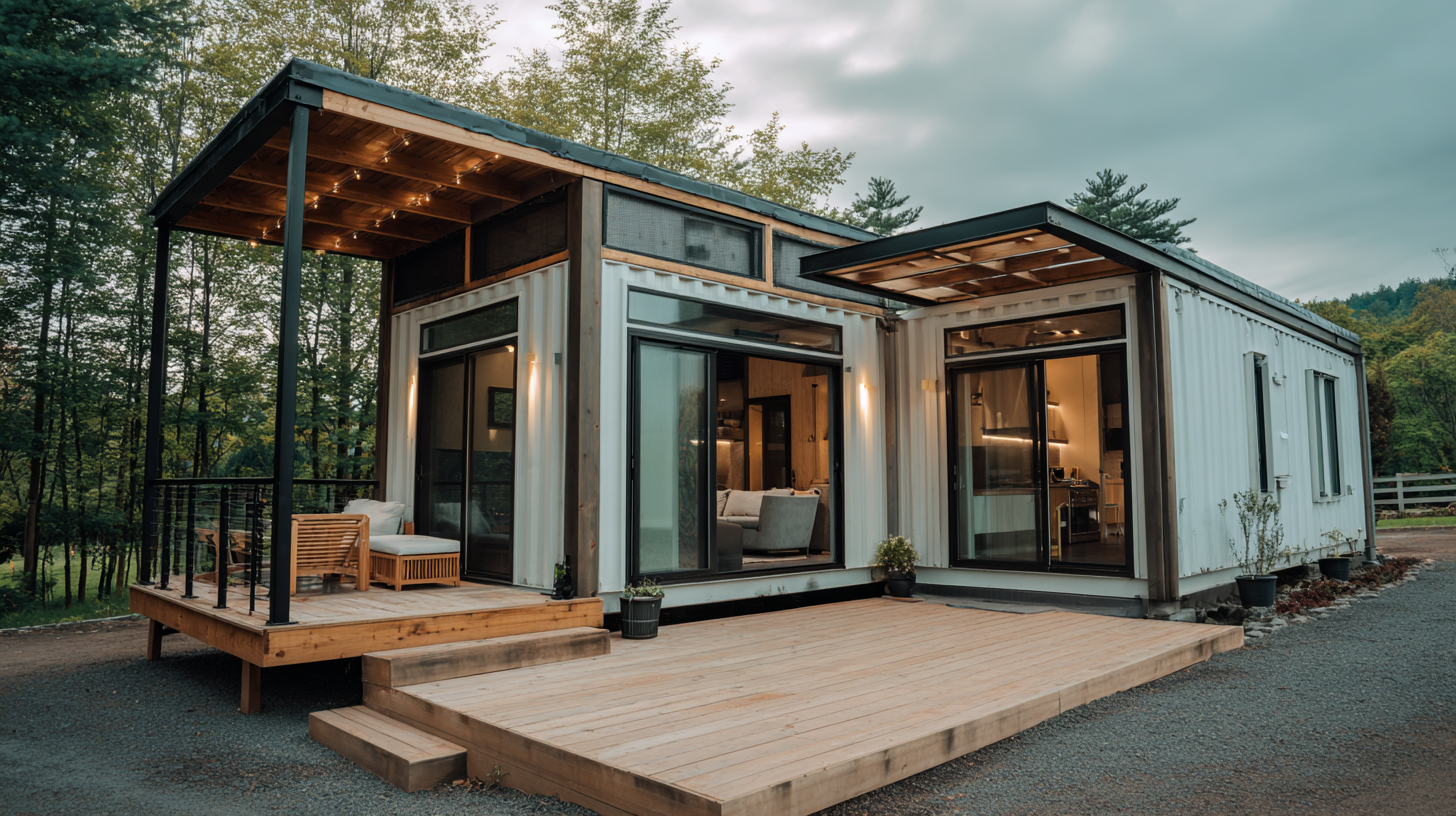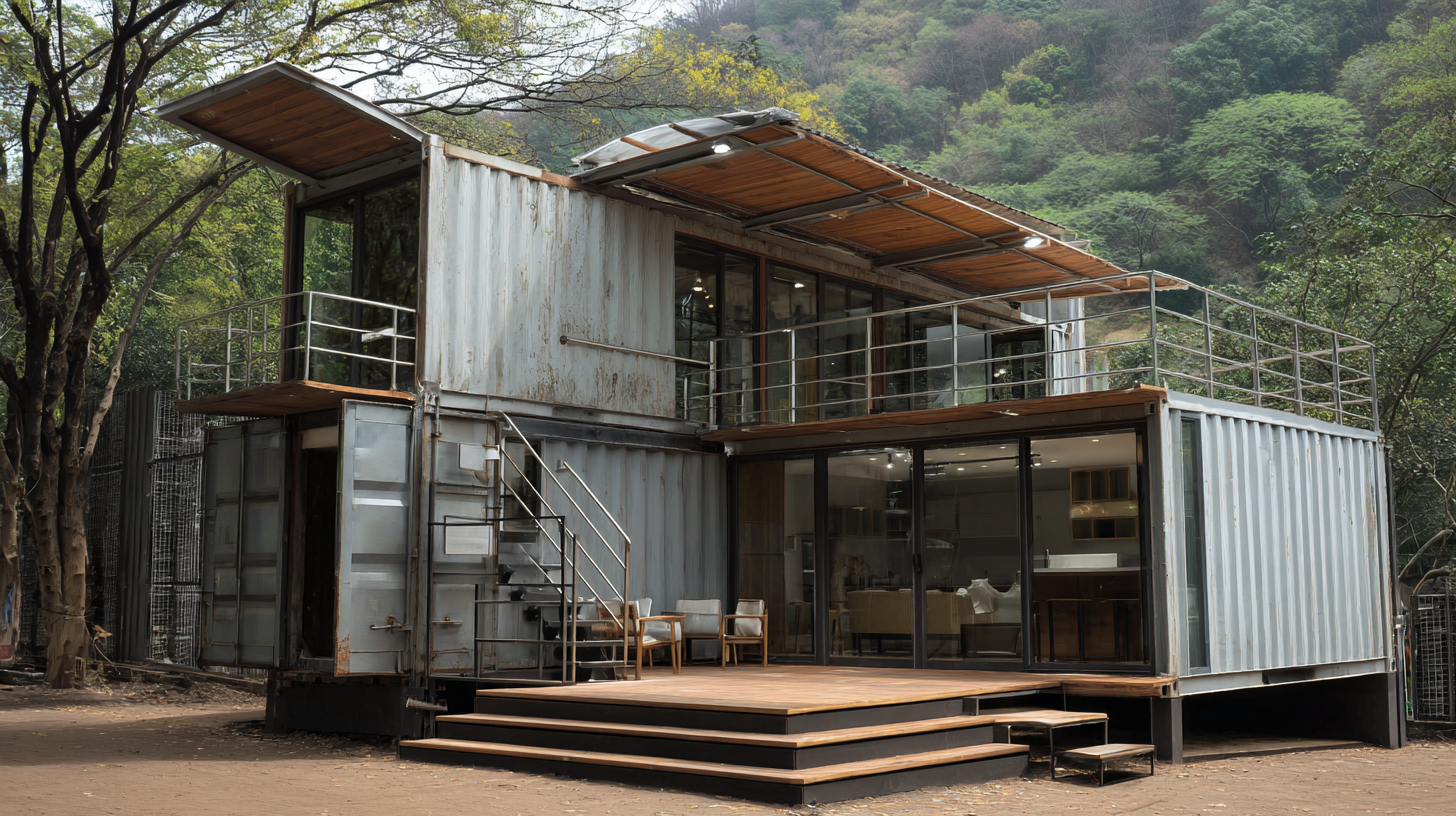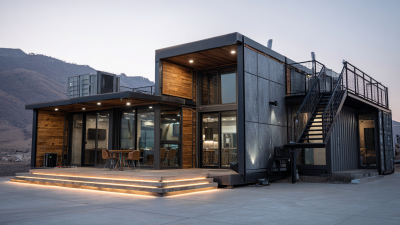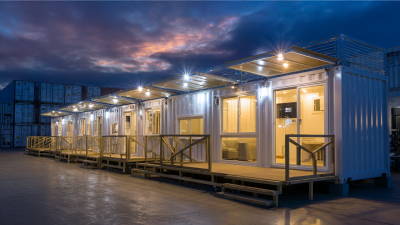As the demand for sustainable living solutions continues to rise, innovative housing options such as container houses are gaining significant traction in modern architecture. According to a report by MarketsandMarkets, the global green building materials market is projected to reach USD 364.6 billion by 2022, reflecting a growing trend towards eco-friendly construction practices.

Container house ready designs offer an efficient, cost-effective, and environmentally conscious alternative to traditional homes. These structures are not only built from repurposed shipping containers, which significantly reduce waste, but they also provide flexibility and rapid construction timelines. By embracing container homes, individuals can contribute to a more sustainable future while enjoying contemporary living spaces that meet modern lifestyle needs.
The intersection of innovation and sustainability is reshaping our housing landscape, making container houses a compelling option for conscientious consumers.
Container houses have emerged as a compelling solution in the quest for sustainable living. These innovative dwellings utilize repurposed shipping containers, transforming them into eco-friendly homes that minimize waste and reduce reliance on traditional building materials. According to a report from the International Journal of Environmental Science and Technology, constructing a standard home typically generates up to 8000 pounds of waste, whereas container houses can significantly decrease this figure by up to 50%. This environmentally conscious approach caters to the growing demand for sustainable living options in urban areas where space and resources are limited.
Furthermore, the economic advantages of container houses are notable. A study by the National Association of Home Builders reveals that the average cost of constructing a conventional home ranges from $100 to $200 per square foot. In contrast, container homes can be built for as low as $30 per square foot, making them a financially accessible option for many. Additionally, with the surge in demand for affordable housing, container homes offer a versatile solution that can be customized to meet individual needs, all while promoting a more sustainable lifestyle. As urban areas continue to evolve, container houses represent a forward-thinking approach to modern living that aligns with the values of sustainability and efficiency.
Container homes have gained popularity as a sustainable alternative to traditional housing, offering numerous ecological benefits that align with modern lifestyles. One of the most significant advantages is their repurposing of shipping containers, which helps reduce waste and promote recycling. By transforming these containers into livable spaces, we not only minimize the carbon footprint associated with new construction materials but also effectively utilize resources that would otherwise contribute to landfill overflow.
Moreover, container homes are often designed with energy efficiency in mind. Many incorporate sustainable features such as solar panels, rainwater harvesting systems, and green insulation materials. These elements not only lower overall energy consumption but also foster a self-sufficient living environment. By choosing a container home, individuals can significantly reduce their environmental impact while enjoying the comforts of contemporary living. As the focus on eco-friendly choices grows, container homes stand out as a practical and innovative solution for those seeking to embrace a more sustainable lifestyle.
| Feature | Description | Environmental Benefit | Cost Efficiency | |
|---|---|---|---|---|
| Recycled Materials | Made from repurposed shipping containers. | Reduces waste and promotes recycling. | Lower material costs compared to traditional building. | |
| Energy Efficiency | Can be equipped with solar panels and energy-saving appliances. | Decreases reliance on fossil fuels. | Reduced utility bills over time. | |
| Modular Design | Flexible layout allowing for customization. | Promotes sustainable space usage. | Saves on construction time and costs. | |
| Durability | Strong steel structure resistant to natural disasters. | Long lifespan reduces need for frequent replacements. | Lower long-term maintenance costs. | |
| Minimalist Lifestyle | Encourages a simpler, more intentional way of living. | Reduces consumerism and waste. | Lower costs attached to maintaining a large space. |
When designing your ideal container house, it's essential to consider a blend of functionality, aesthetics, and sustainability. Start by assessing the site where the container will be placed. A good foundation is crucial, so ensure the ground is leveled and stable to support the structure's weight. Incorporate ample natural light into your design by utilizing large windows or skylights, which can enhance the living experience while reducing energy consumption.
Next, focus on insulation and climate control. Proper insulation is key to maintaining a comfortable indoor temperature throughout the year. Consider using eco-friendly materials that not only provide insulation but also align with your sustainable living goals. Additionally, think about utilizing solar panels or rainwater harvesting systems to enhance energy efficiency and reduce your ecological footprint. Don’t forget to add personal touches that reflect your style—whether it’s through vibrant paint colors, innovative furniture arrangements, or outdoor spaces that blend with nature, every detail can contribute to making your container house a true home.
As the trend of container houses rises, prospective builders must adeptly navigate the complex landscape of zoning laws and regulations that govern their construction. Local and state regulations are often the primary hurdles, as evidenced by recent discussions on how changing land use regulations could permit more streamlined approval for such non-traditional housing solutions. For instance, updated zoning bylaws have been reported to lead to quicker review processes, supporting innovative housing initiatives while addressing the growing demand for affordable living options.
In Chicago, the exploration of 'granny flats' or accessory dwelling units shines a light on the necessity of reforming restrictive zoning policies. Although these units could provide a solution to the housing crisis, their current legal status remains ambiguous, deterring potential builders. Moreover, insights from a report suggest that removing state and local regulatory barriers could significantly benefit entrepreneurs and aspiring homeowners in their quest for affordable housing. With statistics indicating that non-traditional housing options, like container homes, are increasingly sought after, the importance of streamlined regulations becomes ever clearer in fostering sustainable living solutions.

The demand for sustainable living solutions has spurred interest in container homes, which utilize eco-friendly materials and innovative building techniques. According to a report by the World Green Building Council, buildings account for 39% of global carbon emissions, making the choice of building materials crucial in the fight against climate change. Container homes, primarily made from repurposed shipping containers, embody a solution that reduces waste and promotes sustainability. These structures not only offer an affordable housing option but also minimize the ecological footprint typically associated with traditional construction.
In addition to the use of recycled materials, builders are increasingly adopting green techniques such as passive solar design and energy-efficient installations. The Global Container Housing Market report indicates a significant rise in container home projects, with an expected growth rate of 25% in the next five years. This growth is driven by the integration of insulating materials and eco-friendly systems like rainwater harvesting and solar panels, which further enhance the sustainability of container homes. As more homeowners and developers recognize the benefits, container houses are establishing themselves as a viable alternative for modern living that aligns with eco-conscious values.







